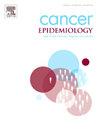Trends in cancer mortality in the elderly and oldest old in South America
IF 2.4
3区 医学
Q3 ONCOLOGY
引用次数: 0
Abstract
Background
Little is known about trends in cancer among the older segments of the population, even less for South America.
Objective
To describe time trends in mortality of the most frequent causes of cancer death among the population aged 70 and over.
Methods
Using the World Health Organization´s Cancer Mortality Database, we studied trends in mortality from lung, colorectal, stomach, liver, prostate, breast, and cervical cancer from 1985 onwards. Joinpoint analyses allow discerning changes in average annual percent change (i.e., slope AAPC) of these trends over time.
Results
The region has a 2–3-fold variation in absolute age-specific cancer mortality rates, with the lowest rates in Argentina and Paraguay and the highest in Chile, Uruguay, and Venezuela. In most countries except for Brazil and Paraguay (both sexes), Peru (females and males 80 +), and Venezuela (males), overall cancer mortality rates were declining in the studied age range, with some fluctuations during the period. The most common causes by sex vary throughout the continent and by age group, but overall, increasing trends were observed for colorectal and breast cancer. In all countries, time trends show reductions in mortality from stomach cancer (AAPC up to –4.77 %) and in some countries (Argentina, Chile, Colombia, and Ecuador AAPC between –0.04 % and –4.37 %) for cervical cancer. In the other countries, cervical cancer mortality remained stable. Lung cancer declined in all countries in males (AAPC between –0.39 % and –2.24 %) except Brazil, Paraguay and the eldest males in Venezuela but among females, increases were observed in most countries (AAPC between +0.47 % and +4.05 %).
Conclusions
Cancer-specific mortality rates vary considerably between countries in South America and the high cancer mortality rates in the oldest segments of the population. Effective primary prevention strategies, vaccination implementation, early detection, effective treatment programs, and better access to healthcare overall can positively impact the trends.
南美洲老年人和高龄老人癌症死亡率趋势。
背景:人们对老年人口中癌症的发展趋势知之甚少,对南美洲更是如此:描述 70 岁及以上人口中最常见癌症死因死亡率的时间趋势:我们利用世界卫生组织的癌症死亡率数据库,研究了 1985 年以来肺癌、结直肠癌、胃癌、肝癌、前列腺癌、乳腺癌和宫颈癌的死亡率趋势。通过连接点分析,我们可以看出这些趋势的年均百分比变化(即 AAPC 斜率):该地区特定年龄癌症死亡率的绝对值相差 2-3 倍,阿根廷和巴拉圭的癌症死亡率最低,智利、乌拉圭和委内瑞拉的癌症死亡率最高。除巴西和巴拉圭(男女)、秘鲁(女性和 80 岁以上男性)以及委内瑞拉(男性)外,大多数国家的癌症总死亡率在所研究的年龄范围内都呈下降趋势,期间也有一些波动。在整个非洲大陆,按性别和年龄组划分的最常见病因各不相同,但总体而言,结肠直肠癌和乳腺癌呈上升趋势。所有国家的时间趋势都表明,胃癌死亡率有所下降(AAPC 最高为 -4.77%),一些国家(阿根廷、智利、哥伦比亚和厄瓜多尔的 AAPC 在 -0.04% 到 -4.37% 之间)的宫颈癌死亡率也有所下降。在其他国家,宫颈癌死亡率保持稳定。除巴西、巴拉圭和委内瑞拉的最年长男性外,所有国家的男性肺癌死亡率都有所下降(AAPC 在 -0.39 % 和 -2.24 % 之间),但大多数国家的女性肺癌死亡率都有所上升(AAPC 在 +0.47 % 和 +4.05 % 之间):结论:南美洲各国的癌症死亡率差异很大,高龄人口的癌症死亡率也很高。有效的初级预防战略、疫苗接种的实施、早期检测、有效的治疗计划以及更好的医疗保健服务都会对癌症的发展趋势产生积极影响。
本文章由计算机程序翻译,如有差异,请以英文原文为准。
求助全文
约1分钟内获得全文
求助全文
来源期刊

Cancer Epidemiology
医学-肿瘤学
CiteScore
4.50
自引率
3.80%
发文量
200
审稿时长
39 days
期刊介绍:
Cancer Epidemiology is dedicated to increasing understanding about cancer causes, prevention and control. The scope of the journal embraces all aspects of cancer epidemiology including:
• Descriptive epidemiology
• Studies of risk factors for disease initiation, development and prognosis
• Screening and early detection
• Prevention and control
• Methodological issues
The journal publishes original research articles (full length and short reports), systematic reviews and meta-analyses, editorials, commentaries and letters to the editor commenting on previously published research.
 求助内容:
求助内容: 应助结果提醒方式:
应助结果提醒方式:


